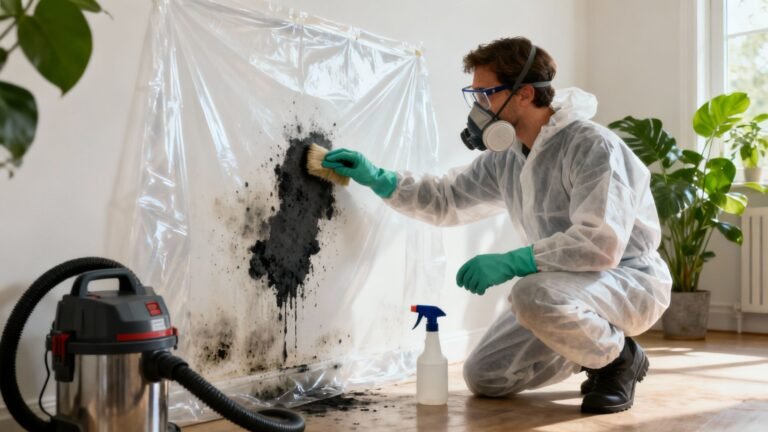
A Homeowner’s Guide to Safe Removal of Mold in Los Angeles
That sinking feeling when you spot mold is universal, especially in the humid pockets of Los Angeles. But before you
Most homeowners associate mold with visible patches on bathroom tiles or ceiling corners. But some of the most dangerous mold infestations are the ones you can’t see—growing silently behind drywall, baseboards, or under floors. Hidden mold can thrive for months without obvious signs, causing structural damage and health issues in the meantime.
If you’ve noticed a persistent musty smell, peeling paint, or unexplained allergies, the problem might be inside your walls. In this post, we’ll break down the hidden risks of mold, how to identify it, and what you can do to remove it.
Mold only needs three things to thrive: moisture, organic material, and lack of airflow. Behind walls, all three are often present.
Undetected plumbing leaks (especially in kitchens, bathrooms, and laundry rooms)
Roof leaks that soak insulation and wall cavities
Flooding or water damage that wasn’t properly dried
Condensation in exterior walls or near HVAC ducts
Poor ventilation in humid areas like basements
Over time, drywall, wood framing, and insulation can become mold hotspots—even if the surface looks fine.
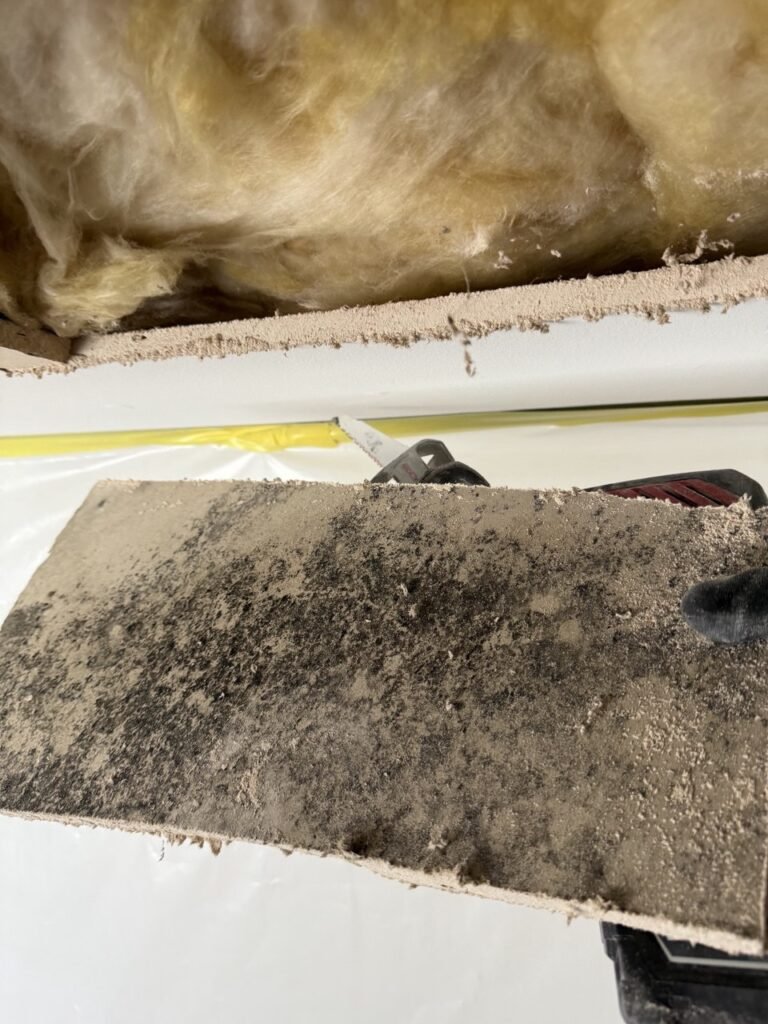
Since mold behind walls is hidden, you have to rely on indirect signs and professional tools to detect it.
Musty or earthy odors that persist
Peeling or bubbling paint
Warped walls or baseboards
Cold or damp patches on walls
Frequent allergy or asthma flare-ups indoors
For deeper inspection, professionals may use:
Moisture meters
Thermal imaging cameras
Wall cavity borescopes
Air sampling and mold testing
If you suspect hidden mold, don’t guess—schedule a professional mold inspection.
Mold doesn’t just damage property—it affects your health, especially when it grows undetected for long periods.
Sneezing, coughing, congestion
Eye irritation, skin rashes
Headaches, fatigue
Asthma flare-ups
Respiratory infections
Increased risk for children, elderly, and those with weakened immune systems
Black mold (Stachybotrys) and other toxic species are particularly dangerous when they go unnoticed.
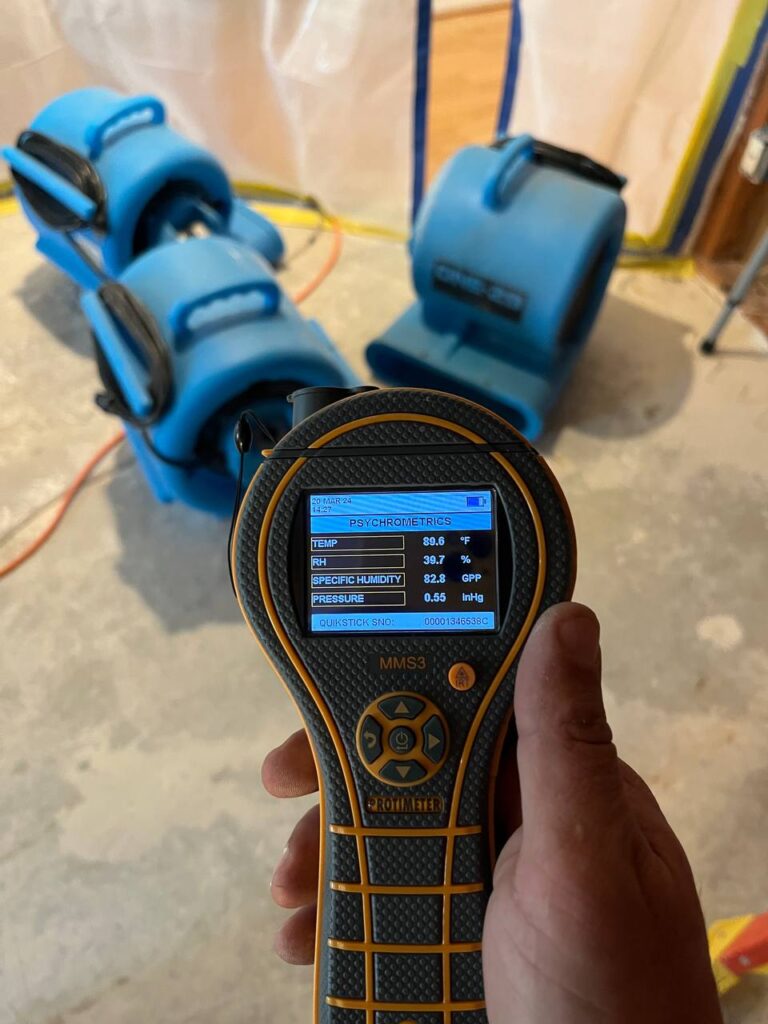
Removing hidden mold isn’t as simple as wiping down a surface. It often requires:
Controlled demolition of affected wall sections
HEPA vacuuming and air filtration
Disinfection with EPA-approved mold solutions
Dehumidification and source moisture correction
DIY attempts often fail to eliminate all contamination—or worse, spread spores.
Always consult certified mold remediation professionals, especially when mold is widespread or affecting walls, insulation, or structural framing.
Due to Southern California’s unique climate and construction types, hidden mold is especially common in:
Flat-roofed homes (prone to pooling and slow leaks)
Homes near the coast (high humidity and fog)
Older homes in Glendale, Pasadena, or Studio City (aging plumbing and insulation)
Newer airtight homes (trap moisture without proper ventilation)
Add seasonal rains, rare but intense flooding, or unnoticed HVAC leaks—and the risk compounds.
Don’t disturb the area — opening walls without containment may spread spores.
Schedule a professional inspection — with infrared scanning, moisture meters, or air sampling.
Book mold remediation — from IICRC-certified technicians who can safely remove mold and restore affected materials.
Fix the source of moisture — otherwise, mold will return.
Hidden mold can stay out of sight—but it shouldn’t stay out of mind. The longer it grows behind walls, the more damage it causes to both your home and your health. If you notice the signs, trust your instincts and get it checked.
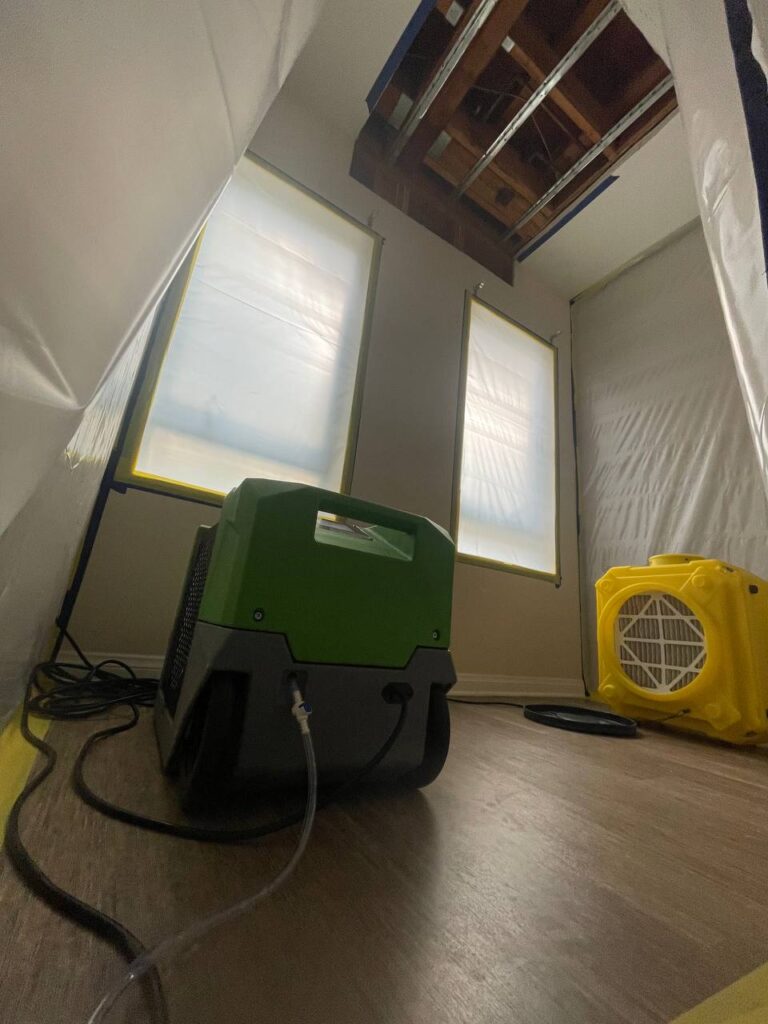
Once water damage and mold have been addressed, it’s tempting to breathe a sigh of relief and move on. But pausing to confirm that your home is truly safe and free of mold is essential for your health—and your peace of mind.
Here’s how to double-check your home’s safety post-restoration:
Taking these extra steps ensures that your home remains not only fresh and restored, but truly safe for you and your family—now and in the future.
Mold thrives in damp environments, so managing your home’s humidity is one of the best preventative steps you can take. Start by keeping indoor humidity levels below 50%—a simple digital hygrometer (found at most hardware stores) can help you keep tabs.
To reduce moisture, consider these strategies:
By consistently managing humidity, you’ll make your home a much less inviting place for hidden mold to take hold.
Once the water and mold are gone, what comes next? Depending on how severe the damage was, you might be looking at anything from simple touch-ups to more extensive repairs. Minor cases could require some patching, painting, or replacing trim, while bigger issues may call for new drywall, flooring, or even full room renovations.
Regardless of the scale, thorough cleaning and proper repairs are essential for keeping your environment healthy and safe—a shortcut here isn’t worth it.
On the bright side, all this restoration may open the door for a little home makeover. After all, if you’re already replacing walls or floors, why not update that outdated paint color or finally swap out the old carpet? Sometimes, necessary repairs can be the push you need to give your living space a fresh look.
If you’re facing a potential mold issue, you’ve likely come across two key terms: mold testing and mold remediation. While they’re both essential, they play very different roles in the mold management process.
Mold testing is all about investigation and confirmation. Licensed professionals collect samples from your home—often using air sampling, surface testing, or swab methods—to determine:
Regulations often require that mold testing and remediation be performed by different companies or specialists, a practice supported by many states (including Florida) to ensure unbiased results.
Once testing confirms a mold issue, mold remediation steps in to resolve it. This process includes:
Professional remediators are trained to handle mold safely and thoroughly so your space becomes healthy again.
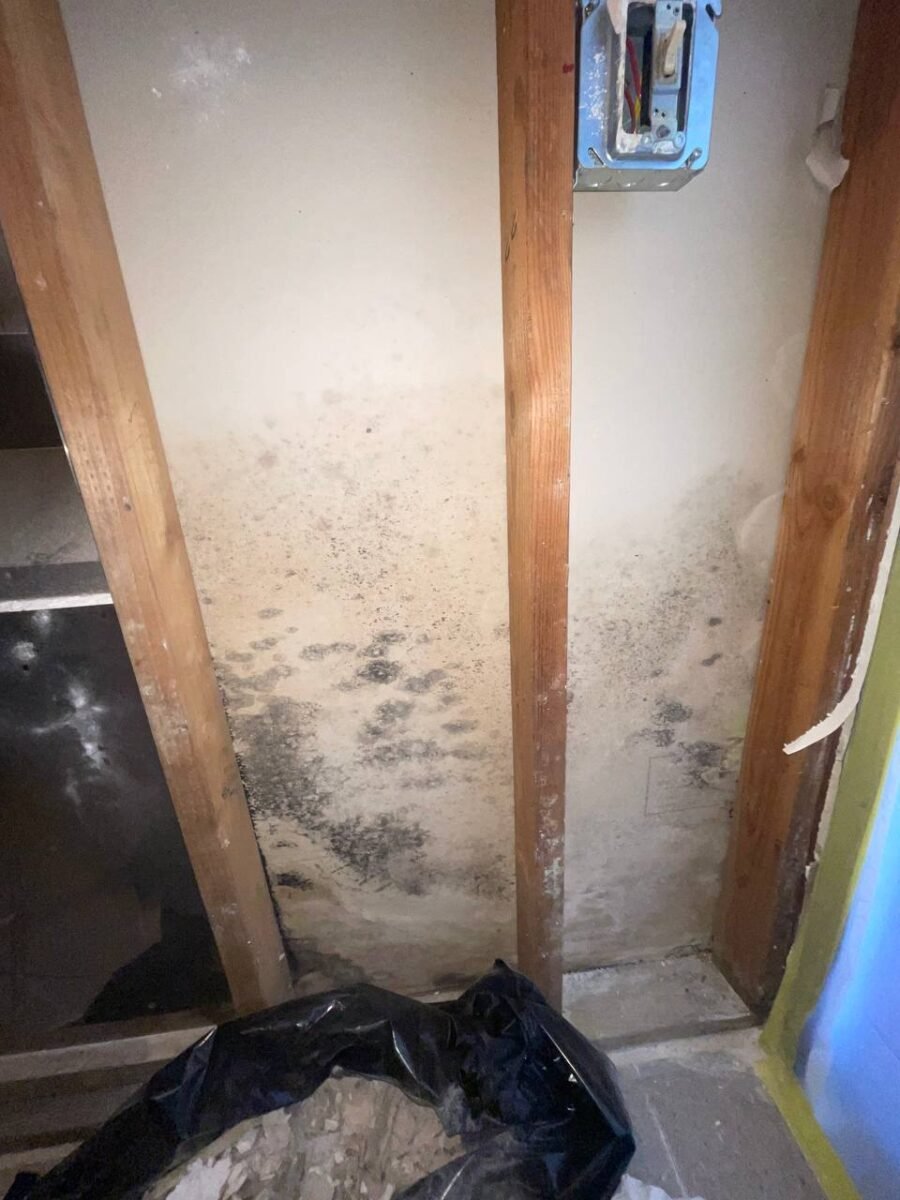
You might be surprised at how quickly mold can take hold after a water event. In as little as a day or two—often within 24 to 48 hours—mold spores begin to multiply if there’s lingering moisture and organic material. That’s why even a minor leak, if left unaddressed, can lead to hidden colonies behind your walls faster than most homeowners realize. Acting quickly when you notice water damage is essential to keep mold from gaining a foothold in your home.
After the visible mold is removed and repairs are made, there’s still one crucial step left: making absolutely certain your home is truly mold-free. That’s where Post Remediation Verification (PRV) comes in.
PRV involves a thorough inspection and testing—typically performed by an independent third party—to confirm that all mold contamination has been successfully remediated. This process often includes:
Once the property passes these tests and meets industry standards (such as those from the IICRC or EPA), a certificate or written clearance report is provided. This final confirmation means you can breathe easy—knowing your water damage or mold issue has been properly addressed and your indoor environment is once again safe.
Addressing water damage and mold issues isn’t just about safety—though that’s the top priority. Proper repair and renovation offer a range of benefits for homeowners:
Fixing structural damage and replacing affected materials ensures your home is free from harmful mold, keeping your air clean and your family healthy.
Well-executed repairs and updates can boost your home’s value, especially if potential buyers know mold has been thoroughly addressed.
Renovation gives you a chance to update outdated features. Whether it’s new flooring, fresh paint, or improved insulation, you can enhance both comfort and aesthetics.
Knowing the problem is fully resolved and repairs are complete allows you to relax and enjoy your space, rather than worry about recurring issues.
Tackling repairs promptly not only keeps your household safe, it’s also an opportunity to invest in your home’s future.
Whether you can remain at home during mold remediation depends on several factors, such as the extent of the mold, the areas affected, and your sensitivity to mold spores. In many cases—especially when mold is limited to a small area and proper containment is set up—homeowners can safely stay, though some rooms may be off-limits during the process.
However, if the work involves tearing out drywall, running high-powered air scrubbers, or extensive demolition, it might be more comfortable (and safer) to temporarily relocate. This is especially true for families with children, elderly members, or anyone with allergies, asthma, or a compromised immune system. When in doubt, talk to your remediation team—they’ll advise based on the scope of the project and your specific needs.
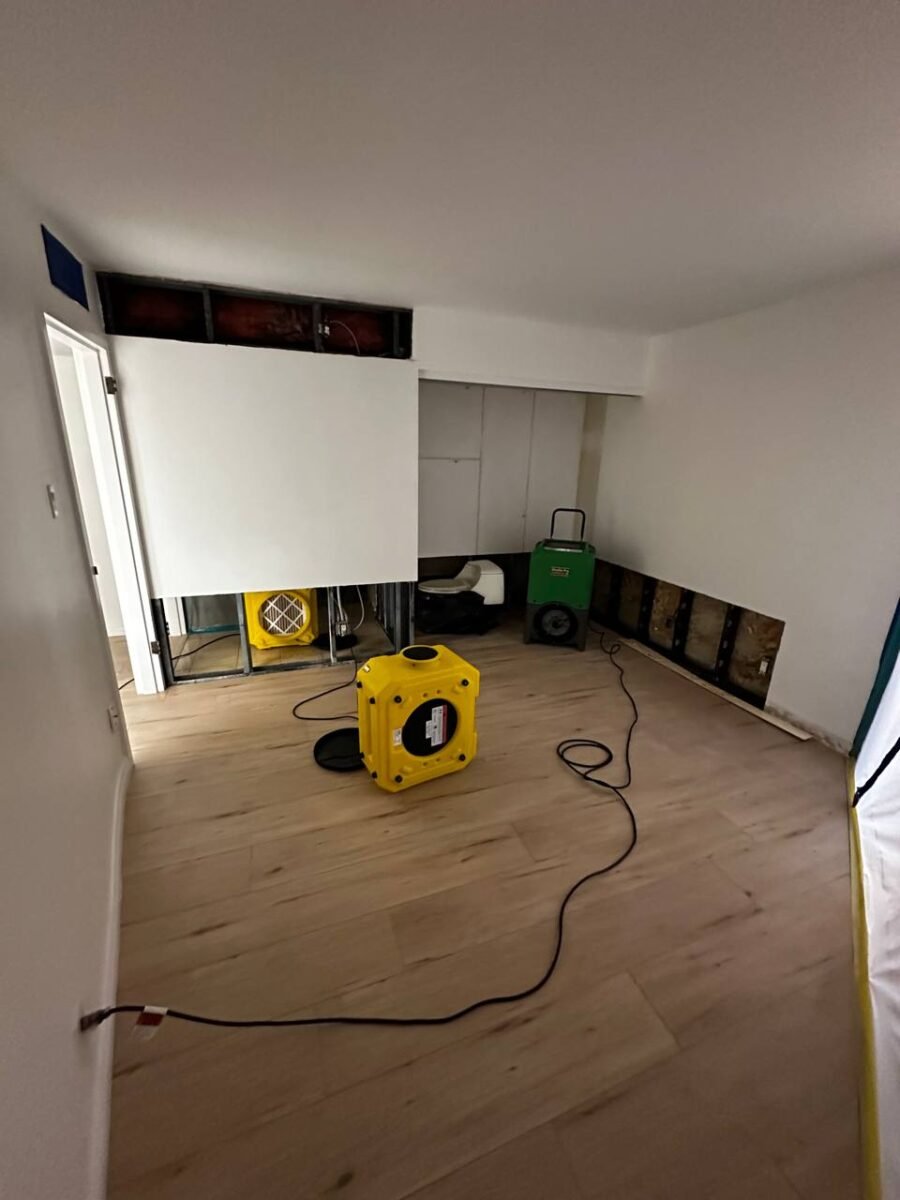

Pete Mantizian is the dedicated owner of Onsite Pro Restoration. He is driven by a passion to improve living conditions and prevent health issues caused by improper restoration. With over 10 years in construction and 7 years in restoration, Petros has managed projects for major franchises like Serv-Pro and 911 Restoration. He holds certifications in Applied Structural Drying, Microbial Remediation, and more. Committed to excellence, Petros ensures every project is done right the first time. Outside of work, he cherishes time with his loving wife and two children, balancing his fulfilling career with creating lasting family memories.
Share
If you suspect mold behind your walls, don’t wait until the problem spreads. Call (818) 336-1800, email info@onsitepro.org, or fill out the form below to schedule a professional inspection. Our team uses advanced tools to detect hidden mold and provide safe, effective remediation.

That sinking feeling when you spot mold is universal, especially in the humid pockets of Los Angeles. But before you
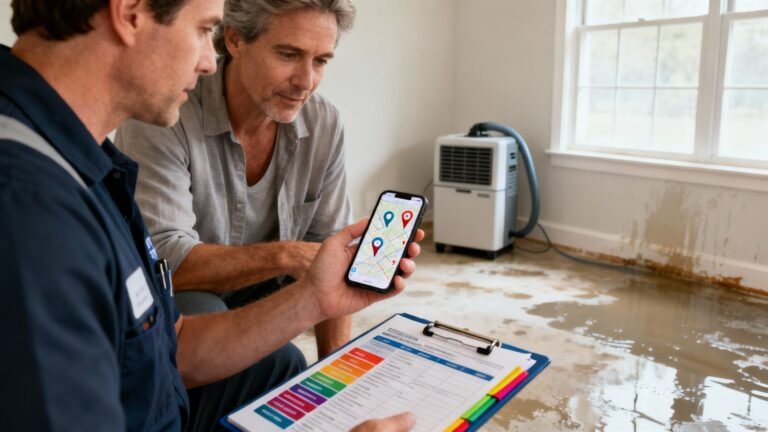
Finding a leak, flood, or any standing water in your home is always a shock. Those first few hours are
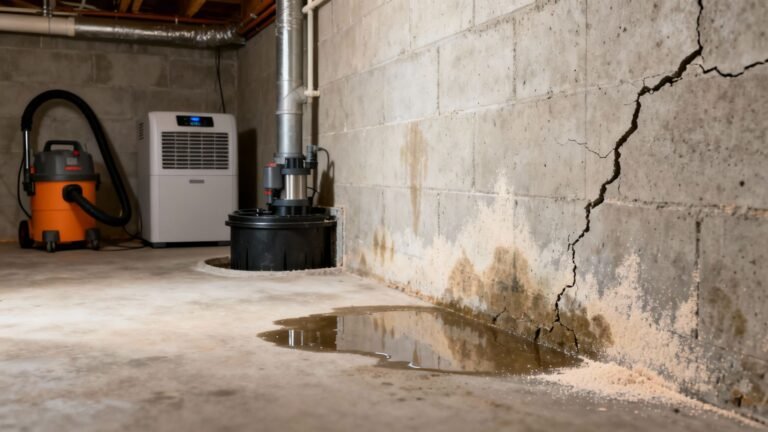
That small puddle in the corner of your basement isn't just a nuisance—it's an alarm bell for your home’s health.